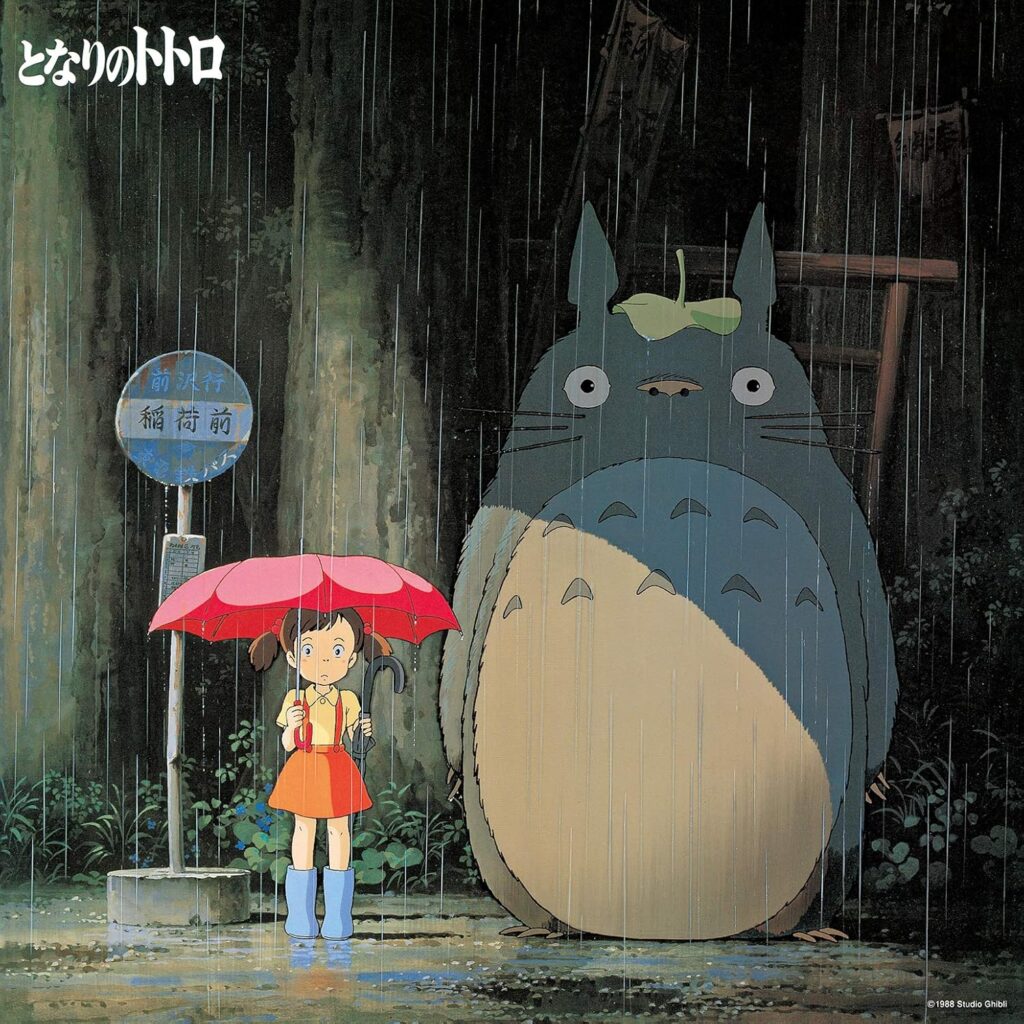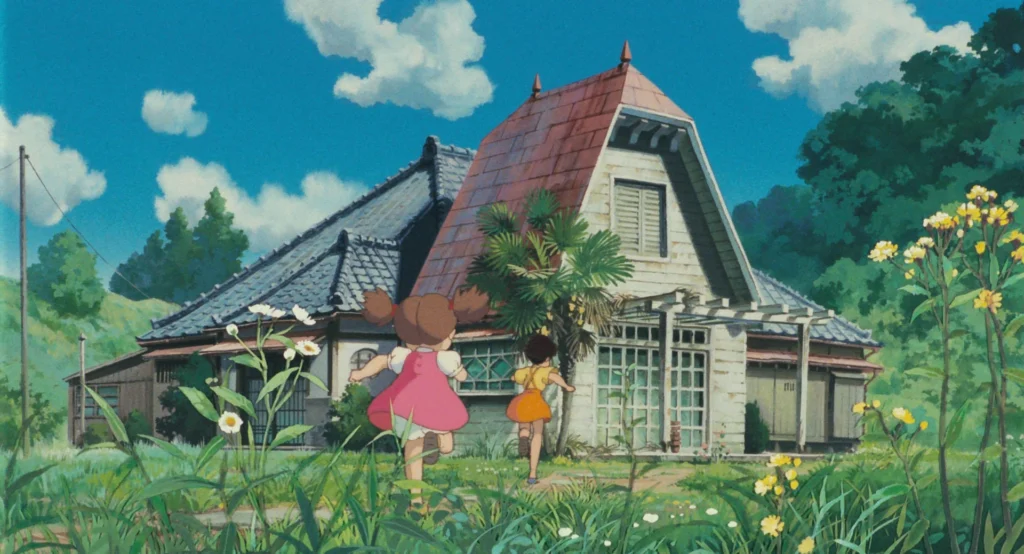RE:Animation – My Neighbor Totoro

Tonari No Totoro like Rashomon is one of those films that a certain type of leftie likes to claim they totally love because it is so super deep on so many, many levels, and only urban sophisticates like themselves can truly appreciate how mind-bogglingly deep and complex the story is. And the odds are good they’ve never actually seen it. I never met one that has actually seen Rashomon either.
My Neighbor Totoro is a good and not very deep movie.
It’s a movie made for a Japanese audience and it means a lot to them. I can understand what they get out of it but I really can’t get it on the emotional level that they do, which is fine because it’s still a pleasant and relaxing film with superb hand-drawn art. It’s like hot cocoa with homemade spearmint marshmallows next to a fireplace on a cold and miserable day.
And it’s currently in theaters for a few days.
The Totoro story is a demi-autobiography of Hayao Miyazaki. He spent a lot of time in the Japanese countryside when he was a kid and his mother was ill for prolonged periods because of her tuberculosis. When it was released in 1988 that kind of peasant lifestyle that had been going on for better than a thousand years was receding more and more each year as if it was retreating into the realm of faery or perhaps land of the Kami would be more appropriate. Japanese rural life of the 1950s had strong connections to the past that were being cut away when the film was released.
The plot is very simple; Professor Kusakabe and his two daughters move to the country in order to be near his wife who is “in the hospital.” Something is being lost in translation here, the hospital is a tuberculosis sanitarium, and for obvious reasons, those were always located in rural areas.
The house is rather old however electricity has made its unwelcome intrusion but it’s barely present in a few rooms. It kind of fits with the design of the house, an ancient Minka-style building with a more modern European expansion stapled to it.

The cooking and heating are wood-powered. It does have a connected bathhouse also coal-fired. The house had been closed for some time enough that Soot Gremlins had moved it. They are the first supernatural entities the kids see.
Satsuki is almost but not quite too old to believe in spirits whereas Mei is four so she has no trouble seeing them at all. There are few other major characters, there is Granny who is ba-chan who looks after the kids while their father is at work. There is also her Grandson Kanta. Satsuki and Kanta spend a lot of time making faces at each other and generally thinking he/she is icky and they will clearly start dating in a few years.
Mei is the one who finds Totoro sleeping in the woods. Totoro is an unspecified type of forest spirit that Miyazaki designed himself. Really he’s an oversized live teddy bear with supernatural powers who looks after kids when they need him. Again, he’s not that complex.
The story is really Satsuki’s and her coming to grips with primal childhood terrors. Losing a parent or losing a little sister you are supposed to be in charge of. A lot this comes from Miyazaki’s own childhood terror of losing his mother to tuberculosis. She didn’t die until she was 71 but it still affected him quite a bit. He was coming to grips with his Mother-wounds when he made Totoro. When you are below a certain age it’s kind of important to not be seriously injured when you fall, that is the mother’s job. A mother’s love being unconditional as it is, is the basis of a person’s self-regard. The feeling of, “I’m good enough anyway.” And Miyazaki’s mom wasn’t there for that. It makes for some pretty deep wounds that need to be addressed before they will heal.
The events of the story follow the Japanese storytelling tradition of kishōtenketsu. Ki – The family arrives in the country. Shō – The girls connect with Totoro’s spirit world. Ten(twist) – Satsuki gets an emergency call from her mother’s sanitarium and then her baby sister goes missing because she thinks she can cure her mother with a magical vegetable. Ketsu (catharsis) – Totoro summons the Cat Bus who finds Mei and then takes to their mother who is just fine BTW.
Here’s the thing cosmopolitan leftie urban sophisticates don’t have a clue about Asian story structure. They don’t understand what the hell is going on but they know they are supposed to be impressed by it so they just act like they declare it to be genius.
Admittedly it had a few things that are genuine head scratchers for a Westerner. Why in hell did Joe Hisaishi use a freaking bagpipe for the opening song about Japanese kids in the country?
Other things are pretty easy to understand because and I cannot stress this enough, it’s not meant to be a deep film. Satsuki and Mei are kids and since they are kids they can still see the magic stuff that you forget about when you grow up. Within the context of the film, Totoro and the Cat Bus are big warm, fluffy, and protective if only a little bit scary.
So does it hold up?
Of course, it does. The animation is beautiful and the story is timeless.
The Dark Herald Recommends with Enthusiasm (5/5)

